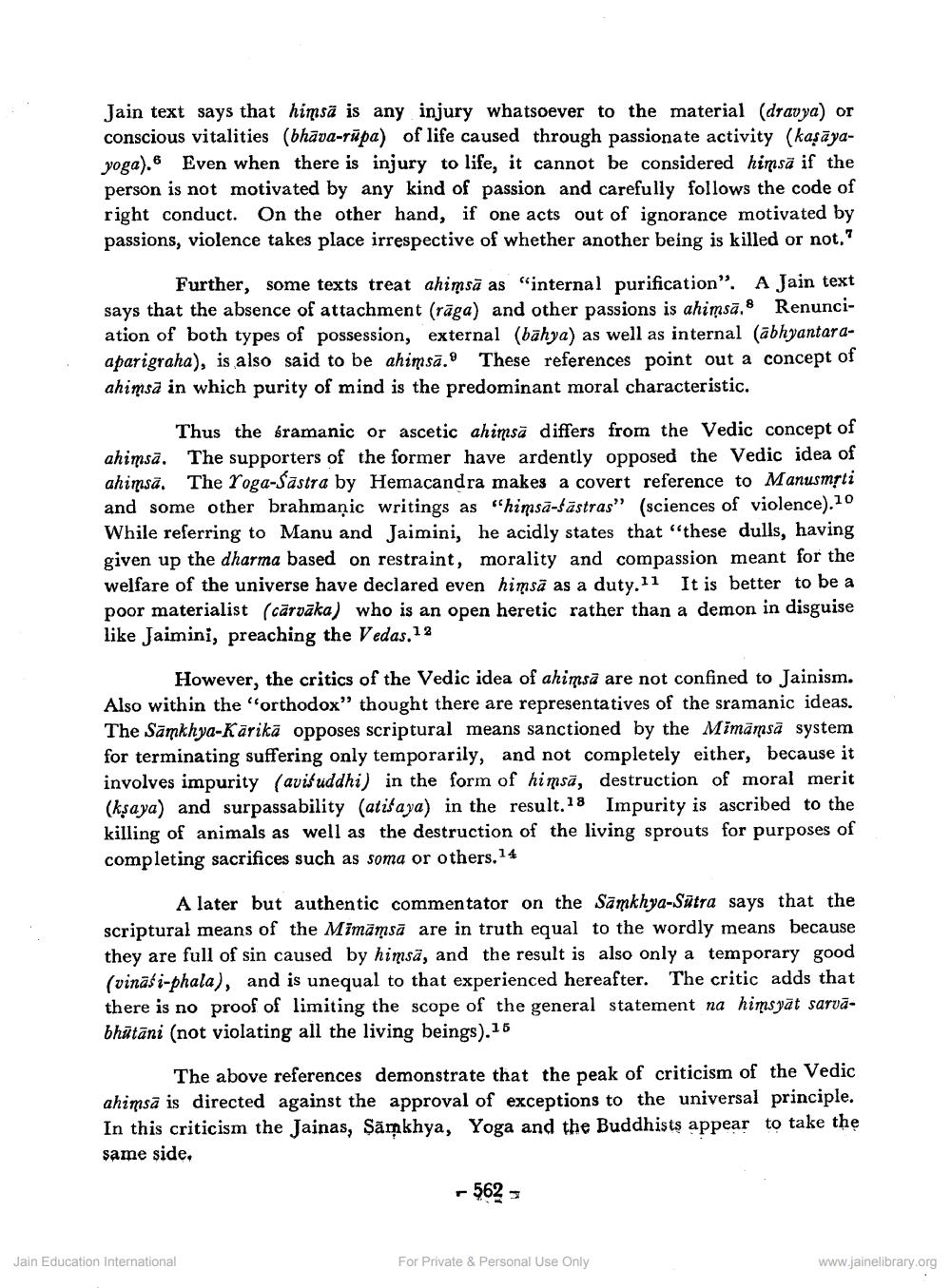Book Title: Two Definations of Ahimsa Author(s): Antu Tahitnen Publisher: Z_Kailashchandra_Shastri_Abhinandan_Granth_012048.pdf View full book textPage 2
________________ Jain text says that himsa is any injury whatsoever to the material (dravya) or conscious vitalities (bhāva-rüpa) of life caused through passionate activity (kasayayoga).6 Even when there is injury to life, it cannot be considered himsā if the person is not motivated by any kind of passion and carefully follows the code of right conduct. On the other hand, if one acts out of ignorance motivated by passions, violence takes place irrespective of whether another being is killed or not." Further, some texts treat ahimsā as “internal purification”. A Jain text says that the absence of attachment (rāga) and other passions is ahimsā.8 Renunciation of both types of possession, external (bahya) as well as internal (ābhyantaraaparigraha), is also said to be ahimsā.9 These references point out a concept of ahimsa in which purity of mind is the predominant moral characteristic. Thus the Thus the bramanic or ascetic ahimsā differs from the Vedic concept of ahimsa. The supporters of the former have ardently opposed the Vedic idea of ahimsā. The Yoga-Sastra by Hemacandra makes a covert reference to Manusmrti and some other brahmanic writings as "himsa-śāstras” (sciences of violence).10 While referring to Manu and Jaimini, he acidly states that “these dulls, having given up the dharma based on restraint, morality and compassion meant for the welfare of the universe have declared even himsā as a duty.11 It is better to be a poor materialist (cārvāka) who is an open heretic rather than a demon in disguise like Jaimini, preaching the Vedas. 1 2 However, the critics of the Vedic idea of ahimsă are not confined to Jainism. Also within the 'orthodox” thought there are representatives of the sramanic ideas. The Samkhya-Kārikā opposes scriptural means sanctioned by the Mimāmsā system for terminating suffering only temporarily, and not completely either, because it involves impurity (avifuddhi) in the form of himsā, destruction of moral merit (kşaya) and surpassability (atif aya) in the result. 18 Impurity is ascribed to the killing of animals as well as the destruction of the living sprouts for purposes of completing sacrifices such as soma or others. 14 A later but authentic commentator on the Samkhya-Sutra says that the scriptural means of the Mimāmsā are in truth equal to the wordly means because they are full of sin caused by himsā, and the result is also only a temporary good (vināsi-phala), and is unequal to that experienced hereafter. The critic adds that there is no proof of limiting the scope of the general statement na himsyāt sarvabhūtāni (not violating all the living beings).15 The above references demonstrate that the peak of criticism of the Vedic ahimsā is directed against the approval of exceptions to the universal principle. In this criticism the Jainas, Şarkhya, Yoga and the Buddhists appear to take the same side. 562 - Jain Education International For Private & Personal Use Only www.jainelibrary.orgPage Navigation
1 2 3
